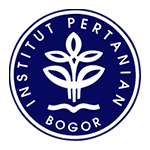Mango fruits play host to some economically damaging fungal diseases, especially during ripening and storage; but mango growers and suppliers have a new ray of hope...in the form of sunlight.
In a recent Phytobiomes journal article, Noam Alkan and colleagues at the Agricultural Research Organization, Volcani Center in Israel show some promising new research that explores the role of sunlight in boosting the levels of beneficial microorganisms in mango fruits to combat stem end rot.
Diskin and colleagues showed that high sunlight exposure in an orchard has the effect of turning the mango's skin red. Mango fruits with less sunlight exposure remain green. Using a novel deep sequencing technique, they studied the dynamics in the microbial and fungal community inside the stem end tissues of both red and green mango fruits during storage.
They found that both fungal and bacterial community changes were dependent on fruit peel color, storage duration, and storage temperature.
The pathogens commonly associated with stem end rot, Alternaria alternata and Lasiodiplodia theobromae, colonize the phloem of the fruit's stem end. As the fruit ripen, they switch to a pathogenic stage and branch into the fruit's softer internal tissue. Colonies of yeast, bacteria, and other fungi that do not cause symptoms were also found.
"Interestingly, exposure to sunlight in the orchard contributed to a 'healthier composition' of fungi and bacteria communities and therefore reduced postharvest rots, while long storage reduced the community variation and led to more pathogenic fungi and rots," said Alkan. "Thus, in fruit that were not exposed to sunlight or in fruits stored for long period, we found an increase in specific pathogenic fungi and an increase in bacteria that are known to degrade fungal cell walls."
The researchers also discovered diverse and dynamic microbial communities that not only contained pathogenic microorganisms but beneficial ones that one day could be used in agriculture, the food industry and biomedicine.
"This is one of the first articles to offer a deep insight into microbiome of harvested fruits," said Alkan. "We believe that healthier microbial composition is going to be a major topic of interest to everyone dealing with food safety and food waste in the near future."









